
What Cartoon Therapy Teaches Us About Mental Wellness
Did you know there’s a whole branch of therapy dedicated to healing people through books?
Bibliotherapy is a form of therapy that involves reading specific fictional works that talk about issues similar to those in your own life. You then discuss them with the therapist in order to help work through your own problems.
But as Western animation embraces more complex emotional themes, folks of all ages are relating to cartoons in a similar way. These works explore issues like grief, growing up, social justice, and even mental health in a way that’s layered, but still accessible and entertaining for a variety of audiences.
Cartoon Therapy, a scripted web series by popular Youtube creator Thomas Sanders, takes this to another level with a fictional therapist using cartoons to help his patients open up about their issues.
(SPOILERS for Avatar: The Last Airbender and Cartoon Therapy below)
About Cartoon Therapy
“I found that it’s easier for people to discuss their issues when talking about a fictional situation that parallels their own. It takes the pressure off. Sometimes it just helps to put it into perspective.”
Dr. Emile Picani, “What STEVEN UNIVERSE Teaches Us About Relationships”, Cartoon Therapy
The two episodes released so far each show Dr. Picani (played by Sanders) focusing on a well-known animated series (Steven Universe and Avatar: The Last Airbender, respectively) to explore a specific issue (relationships and self-worth) with three sets of clients.
To be clear, this is not meant to simulate actual therapy. But licensed therapist Kati Morton‘s assistance on the scripts lends authenticity to the discussion.
While Steven Universe and ATLA are already subject to plenty of discourse, Cartoon Therapy stands out to me by using a fictional context to talk about a fictional work and apply it to real-world situations.

I mean, it’s basically what I already do – use stories to understand myself and to relate to others. I’ve often used books or movies or TV episodes as a bridge to talk about deeper issues with people – not effectively enough to be a therapist, but still.
The Thomas Sanders team plus Morton turn what could have been video essays into hilarious and heartfelt stories, chock full of puns and cartoon references from Popeye to Spongebob Squarepants, as well as good character development.
By the end of the episodes, you feel for the patients and their issues as much as for the characters from the works they’re referencing. This gets the mental wellness messages across in a more organic way.
Characters
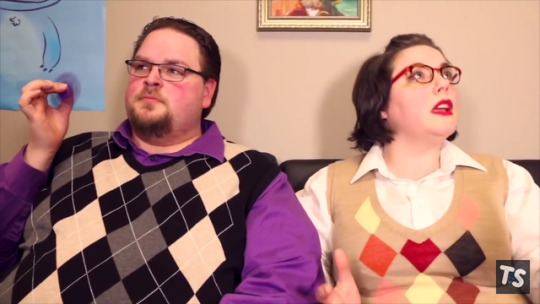
It helps that the show has recurring patients who viewers can invest in across multiple episodes:
- Elliott (played by co-writer/director Joan Stokes) is in a toxic relationship with their boyfriend and struggles with their family and low self-esteem.
- Dot and Larry (Leannis Crutchfield and Esteban Alvarez III) are refreshingly not in therapy because their relationship has hit the rocks. Instead, they use their sessions (with some arm-twisting on Dot’s part) to work through smaller issues in communication. This reflects a reality rarely shown in the media that couples therapy isn’t just for troubled relationships.
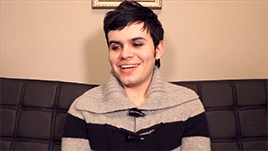
That said, one-off characters Sloane (Kyle Tapley), Corbin (Terrence Williams Jr.), and Kai (Talyn) are engaging in their own ways. They may yet come back in future episodes.
Using Avatar as a Lens to View Mental Wellness
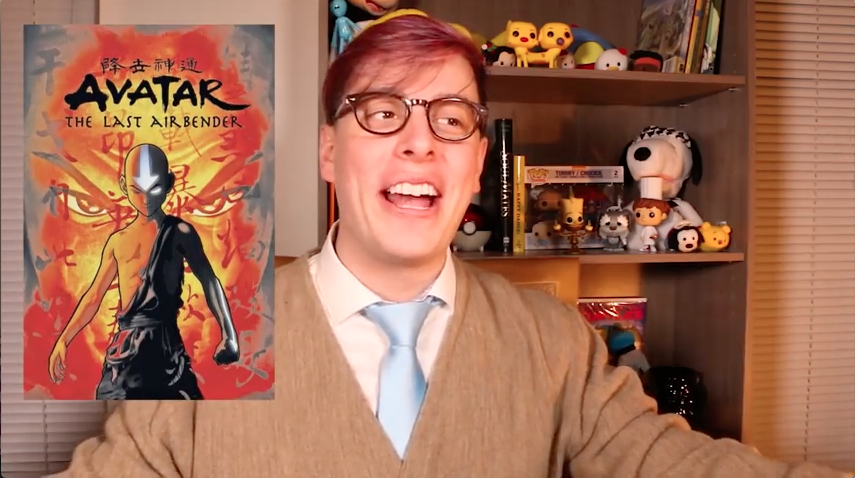
“You, like so many people at some point in their lives, must embark on a journey to discover your own self worth. And I know that’s not the easiest thing in the Four Nations. But some of the most arduous journeys make the best stories.”
Dr. Emile Picani, “What AVATAR: THE LAST AIRBENDER Can Teach Us About Self-Worth”, Cartoon Therapy
While the first episode, “What STEVEN UNIVERSE Teaches Us About Relationships”, is really interesting in its comparison of the patients’ relationships to the Gem Fusions of Steven Universe, the second episode deals more directly with mental health techniques.
It’s safe to say Avatar: The Last Airbender is one of the most highly-regarded animated series ever. It is praised to this day for its fantasy and martial arts-fueled action, its humor, and, most importantly, its characters. The deep philosophical themes, inspired by Eastern tradition, are illustrated in the characters’ development.
(For the uninitiated, the opening gives a solid summary of the show’s central premise.)
“What AVATAR: THE LAST AIRBENDER Can Teach Us About Self-Worth” applies the lessons of ATLA to real-world situations.
Imposter Syndrome and Working in the Neutral
As Elliott relates how they feel unimportant and unworthy next to their family, Dr. Picani compares them to title character Aang.
Though Aang is actually incredibly important as the Avatar and the only one who can stop the Fire Nation’s war, he feels undeserving and incapable since he initially ran away from his duty, which brought some devastating consequences to the world. While Elliott’s situation isn’t nearly so dire, they both could be said to suffer from imposter syndrome.

Imposter syndrome is a psychological behavior where someone tends to downplay or overlook their accomplishments and focus on their flaws, convinced they’re incompetent frauds. According to a study in the International Journal of Behavioral Science, a majority of people feel this way at some point in their lives.
Just as Aang initially overlooks the good he has done since running away, Elliott overlooks the good qualities in themself observed by the people who truly care for them. And that does damage.
I myself work hard to catch myself in this (with mixed results), and hate when I see people I care about fall into this trap. Because even if this feeling of incompetence is all internal, it’s a hard thought pattern to break.
Which is why I love that they also talk about “working in the neutral.”
In ATLA, jing describes how one directs their energy. Positive jing is active, aggressive action. Negative jing is passive, avoidant action. But then, there’s neutral jing – stopping and listening, being watchful until the right move presents itself.
In the context of mental wellness, Picani suggests that Elliott work in the neutral by starting small. “Whenever the doubts and insecurities pop up, perhaps you could try thinking ‘maybe… it’s possible… I’m not as worthless as I think I am.’”
By watching our thoughts and questioning them, we can start to make small shifts in our views of ourselves, a little at a time.
Redirecting Lightning

Picani also relates Elliott’s troubles to Prince Zuko, an antagonist/deuteragonist and parallel to Aang.
Zuko had his own struggles with self worth, as his father, the evil Fire Lord Ozai, put him down his whole life for being soft and not as talented as his ruthless sister, Azula.
These two most toxic people in Zuko’s life also happen to be skilled lightning benders, an even more dangerous subclass of fire bending. (Yikes.)
Just as Zuko had to learn to redirect lightning away from himself in order to stand up to his family, Picani suggests Elliott needs to deal with the negative energy from his family and boyfriend in a similar fashion.
It’s such a powerful metaphor connected to such a cool bending concept, and I love that this suggests that we can all learn to redirect lightning.
Through breaking down these metaphors in a therapeutic context, Cartoon Therapy gives viewers strategies for increasing mental wellness.
Representation and Mental Wellness
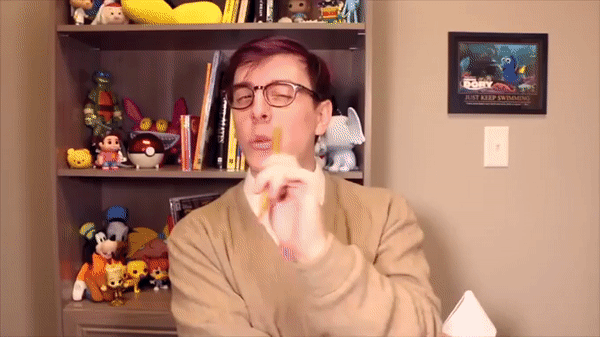
There’s one other factor that I think makes Cartoon Therapy such a good series for mental wellbeing. And it’s one I think people overlook.
Because Sanders and his team have such a diverse friend-group and fan base, they take extra care to represent many types of people and relationships.
In “What STEVEN UNIVERSE Teaches Us About Relationships”, two of the three couples involved are non-heterosexual. Even Larry, though he’s in a heterosexual marriage, identifies as bisexual (in a rather… dramatic fashion).
(I’m sorry, I had to share this. It’s just too good.)
Plus, Steven Universe itself is known for being a herald of diversity and LGBTQ+ representation in children’s animation. It’s one of the few that openly discusses sexuality in a way that can be applied to adult relationships.
“What AVATAR: THE LAST AIRBENDER Can Teach Us About Self-Worth” not only discusses the blind Toph Beifong from ATLA, but also goes into depth on Kai’s Ehlers-Dalos Syndrome. Based on positive fan response, it seems to accurately represent the strain of this condition while also not defining Kai as a character.
This made a lot of people with an invisible, painful condition feel seen. Less alone.
That is, I think, a key part of mental wellness – knowing you’re not alone. When media representation does this for people, it helps create a better world.
I hope to see more mainstream works follow Sanders’s example, and to see more Cartoon Therapy episodes in the future!
Have you seen Cartoon Therapy? If not, have I made you want to check it out?

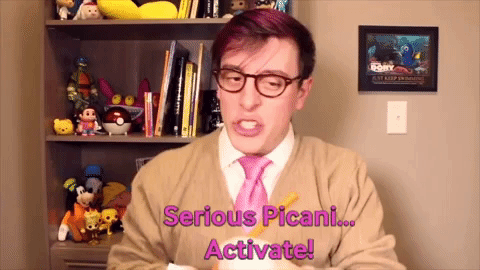
Alice
This explains so well how much I love this show!
Talyn, who plays Kai, has EDS themself so that’s why it’s been so well represented.
(Small note: in your paragraphs about Imposter Syndrome, you used he/him pronouns for Elliott, instead of they/them!)
kateeorgera
Hi Alice! Thanks for your comment!
I’d heard something about Talyn having EDS in my research for this story, but I couldn’t find solid confirmation so I left it out. But if that’s really true, I commend them for portraying their condition on the show. Might add it in an edit at some point.
Yeah, someone pointed the pronoun thing out on Twitter too, you’ll find I’ve made edits since then. I wrote that part late last night – I guess since I’m not used to the they/them pronouns used in singular and it was late, I just forgot. I know that’s not okay, and I want to do better in the future, but that’s what happened. I’m glad you enjoyed it otherwise!
Rebecca
Are you still planning on doing the post about Sanders Sides? I really enjoyed reading this and I’d love to see your take on one of my favourite webseries’.
kateeorgera
Hi Rebecca!
Thank you for reaching out! Ugh… I would still love to do at least one post on Sanders Sides, I just got really sidetracked by life stuff and there’s just SO MUCH to talk about with Sanders Sides! There’s even been a new video since I last posted (which I haven’t seen yet) so it might mess with some of what I’d planned to say. Still, I do want to do a post on it, so stay tuned!